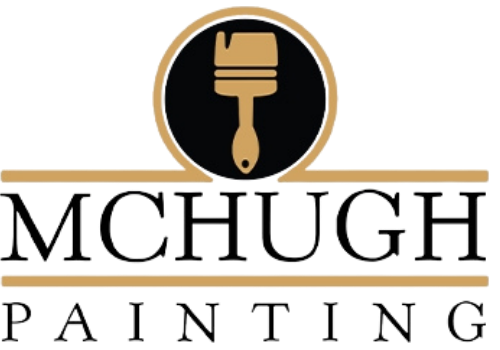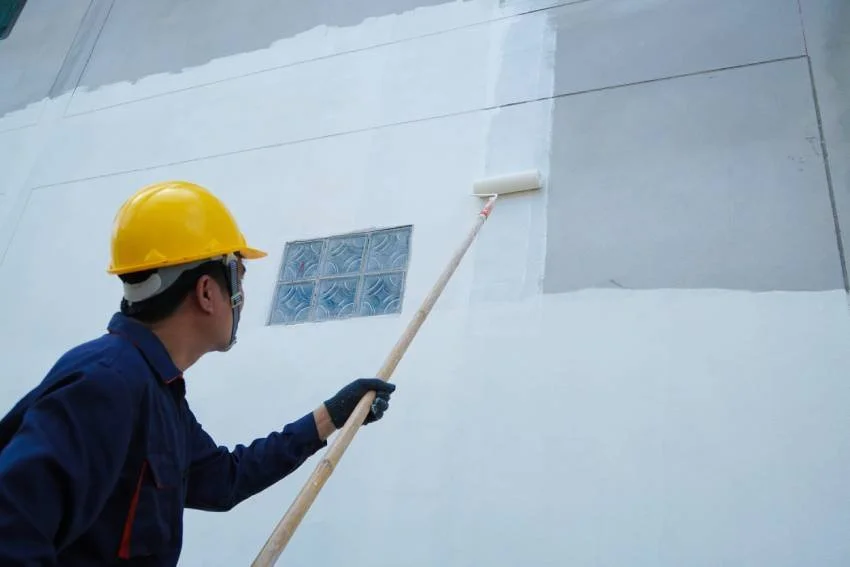Commercial Painting Tips to Improve Your Next Project
Whether you're giving a tired storefront a facelift or refreshing 30,000 square feet of drywall inside an office tower, a commercial painting project has a lot of moving parts. It's not just about choosing a colour and calling it a day. You’re balancing schedules, budgets, safety protocols, tenant needs, and probably some last-minute curveballs—usually all at once.
And while paint might seem like the final coat—the thing you slap on once everything else is done—it’s actually one of the most visible parts of the project. If it’s done right, nobody really notices. If it’s done wrong, it’s the first thing people see. Every smudge, every streak, every missed patch under fluorescent lighting? Front and centre.
That’s why planning matters. Not just the what and the when, but the how, the who, and the “did anyone check if this coating even works on metal?” Getting a great result starts long before the first drop of primer hits the wall.
This guide is here to help you navigate the process with fewer headaches and better results. We’ll walk you through the stuff most painting companies gloss over: how to tell if you’re being overcharged, what safety standards should actually look like, which painting techniques work best in commercial environments, and why picking the right contractor might save you more than just money.
We’ll also break down the different types of commercial painting—because yes, there are several—and what you need to know about paint performance, compliance, and branding. Not every space needs antimicrobial epoxy, but some absolutely do. And understanding those nuances means you don’t end up repainting six months later because the wrong product was used.
At McHugh Painting, we’ve handled everything from office interiors and industrial warehouses to retail rollouts and multi-unit housing. And if there’s one thing we’ve learned, it’s that clear communication and proper prep almost always separate the projects that go smoothly from the ones that don’t.
So, if you're gearing up for your next commercial painting job—whether it’s small, sprawling, or somewhere in between—keep reading. You’ll get real, practical advice to help you make better decisions, ask smarter questions, and get a final result that actually looks as professional as you need it to be.
What Is Commercial Painting?
Commercial painting refers to painting services applied to properties used for business, industrial, or public purposes. Unlike residential painting, which focuses on personal style and comfort, commercial painting needs to meet functional, regulatory, and branding demands—all while staying on schedule and within budget.
Types of Properties That Require Commercial Painting
Commercial painting isn’t a one-size-fits-all situation. These jobs vary widely depending on the space:
Retail stores and plazas – need inviting colours that draw people in without distracting them from the merchandise.
Offices and professional spaces – should align with brand identity and boost productivity.
Warehouses and manufacturing plants – require durable coatings that stand up to heavy use, fumes, and heat.
Restaurants and hotels – must balance style with cleanliness and food-safe standards.
Multi-unit residential buildings – like condos and apartments, where both curb appeal and fast turnaround matter.
Key Differences Between Commercial Paint vs Residential Paint
The differences between commercial paint vs residential paint go beyond product labels:
Durability: Commercial paints are formulated for longevity and resistance to wear.
Dry time: Faster-drying products are essential in high-traffic or time-sensitive environments.
Application method: Commercial work often requires spray or electrostatic application for efficiency.
Compliance: Commercial coatings may need to meet environmental, safety, or hygiene standards.
How Much Does Commercial Painting Cost?
If you’re budgeting for your next painting project, you’re probably wondering: how much does commercial painting cost? It’s a fair question—and one that deserves a straight answer. But here's the catch: commercial painting isn’t a one-size-fits-all situation. It's more like asking how much a car costs. Are we talking about a used hatchback or a fully loaded pickup?
Still, there are ways to estimate costs, avoid surprises, and make sure you’re not getting hosed. Let's break it down.
Factors That Influence Price
Several variables come into play when estimating the cost of a commercial paint job. Some are obvious, others sneak up on you:
Square footage and wall height – The more surface area, the more paint and labour you'll need. Tall ceilings or multi-level spaces mean extra gear like lifts or scaffolding.
Accessibility – Tight spaces, busy hallways, or buildings with restricted hours all make things trickier. And trickier almost always means pricier.
Surface preparation – If walls are damaged, greasy, water-stained, or flaking, the prep work will cost you. Cleaning, patching, sanding, priming—none of it’s glamorous, but it’s all necessary.
Type of coating and number of coats – Using specialty coatings or dark colours that require multiple coats can quickly raise material and labour costs.
Time constraints – Need it done on evenings or weekends to avoid disrupting operations? That’s overtime, and it comes with a cost.
There’s also the less-tangible stuff: job site coordination, change orders, bad weather, or tenant complaints. The more organized you are upfront, the fewer of those curveballs you’ll pay for later.
A good rule of thumb? If the scope is unclear, the quote probably is too. Get specific, and ask your contractor to do the same.
Understanding Commercial Painting Cost Per Sq Ft
In Ontario, most painters price jobs by square footage. It’s a helpful metric for budgeting, but it’s not the full story. On average, commercial painting cost per sq ft ranges from $1.50 to $4.50, but that number can swing based on a few things:
Interior vs. exterior – Exterior projects tend to be more expensive due to height, access issues, and weatherproofing needs. Plus, you may be dealing with textured surfaces, caulking, and trim details. Learn more about our interior painting services and exterior painting services.
Extent of prep work – A clean, well-maintained drywall surface is cheap to paint. Peeling stucco that needs repair and priming? Not so much.
Type of paint or coatings used – Basic latex for office walls is affordable. Antimicrobial paint for a medical facility? That’s going to cost more per litre—and usually takes longer to apply.
For larger projects (think: multi-floor commercial buildings), labour typically accounts for 60 to 70 percent of the total cost. Paint and materials make up the rest. On smaller or more intricate jobs—like stairwells, textured ceilings, or trim-heavy retail spaces—the ratio can flip. You’ll spend more on tape, brushes, specialty rollers, or even renting lifts for hard-to-reach corners.
Don’t forget about mobilization costs, either. Just getting the crew, gear, and materials to the site costs money. If your project is remote, urban with limited parking, or requires multiple mobilizations, that adds up fast.
Types of Commercial Painting and How Each Impacts Your Space
Different painting types exist for different commercial needs. Understanding the types of commercial painting available helps you prioritize both form and function.
Interior Painting for Workplace Function and Brand Identity
Your interior space sends a message. Whether it’s a law firm or a gym, your colour palette and finish matter. Clean, scuff-resistant walls in reception areas, gloss finishes in washrooms, and calming tones in meeting rooms all contribute to how your space feels and functions.
We offer full interior painting services tailored to commercial spaces across Ontario.
Exterior Painting for Long-Term Durability and Curb Appeal
Exterior painting is about more than appearances. It protects the building envelope from weather, UV rays, and corrosion. Surface type (stucco, brick, metal, siding) dictates product choice. Elastomeric or anti-mould paints are common upgrades.
See how our exterior painting services can protect your building.
Specialty Coatings for High-Use or Regulated Environments
Food plants, hospitals, schools, and warehouses often need coatings with specific properties:
Antimicrobial for hygiene
Epoxy for floors and wear zones
Low-VOC for sensitive or enclosed areas
Fire-retardant for compliance
Choosing the right coating ensures your space stays safe and up to code.
Commercial Painting Techniques That Deliver Professional Results
The best paint in the world won’t help if the technique is wrong. Great painters understand the nuance of different surfaces, environments, and expectations. These commercial painting techniques are the ones worth knowing.
Application Methods: Brush, Roller, Spray, Electrostatic
Brush – best for trim and touch-ups
Roller – efficient for large flat areas
Airless spray – ideal for speed and even coverage on drywall, ceilings, or exteriors
Electrostatic spray – used on metal surfaces like lockers or machinery for uniform coverage and minimal overspray
Matching the tool to the task is what separates pros from amateurs.
Matching Methods to Surfaces and Ensuring Quality Control
Different surfaces absorb paint differently. Brick and concrete require specific primers. Metal might need a rust-inhibiting base. Gloss shows imperfections, while matte hides them.
Quality control means:
Prepping properly
Checking adhesion and drying
Doing walk-throughs between coats
Fixing issues before the final invoice
Painting Safety Procedures on Commercial Sites
You can’t talk about commercial painting without talking about safety. Proper painting safety procedures protect workers, occupants, and your investment.
Core Safety Standards for Commercial Painting Sites
Reputable painters follow essential site protocols:
PPE (gloves, goggles, respirators)
Fall protection for heights
Ventilation and signage in enclosed areas
Proper storage of paints and solvents
If your painters don’t talk about safety, that’s a problem.
Compliance With Ontario Workplace Regulations
In Ontario, painters must meet Ministry of Labour standards. That includes:
WHMIS training
Working at Heights certification
WSIB registration
Daily hazard assessments
When in doubt, ask for proof. You can’t afford not to.
How to Choose a Painting Contractor
The wrong painter can cost you time, money, and reputation. Knowing how to choose a painting contractor can help you avoid bad hires and get peace of mind.
Credentials, Insurance, and Safety Compliance
Before hiring, check for:
Business licence
WSIB coverage
General liability insurance
Written safety plan
No paperwork? No job.
Trust a painting company that takes your project seriously.
Evaluating Past Work and Industry Experience
Not all experience is equal. Ask to see:
Photos of past jobs
References from similar industries
Testimonials or Google reviews
Look for transparency and consistency—not just flashy before-and-afters.
Need Help With Your Commercial Painting Project?
You don’t need to have all the answers. You just need a contractor who does.
McHugh Painting, a leading painting company in Ontario, brings decades of experience, zero guesswork, and a team that treats your property like it’s their own. From product selection to prep to finish, we handle every part of the process—without cutting corners.
Ready to get started? Contact us today. We’ll give you clear answers, fair pricing, and honest timelines. Let’s paint something great.



